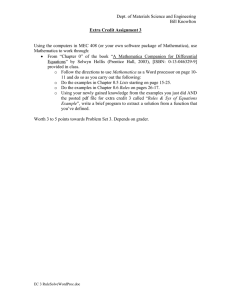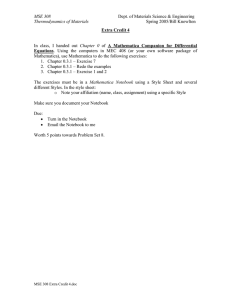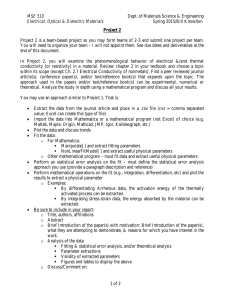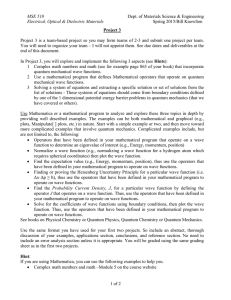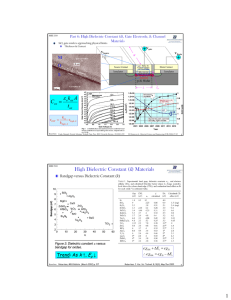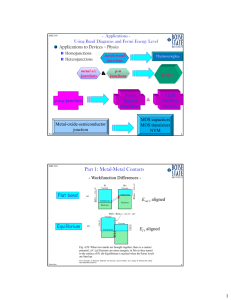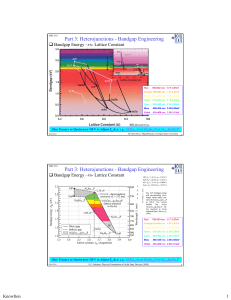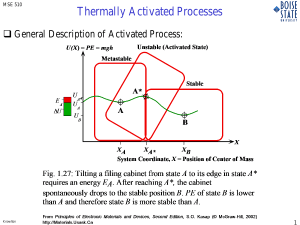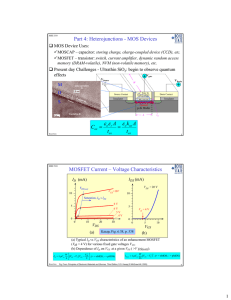MSE 510 Electrical, Optical, & Dielectric Materials Bill Knowlton
advertisement
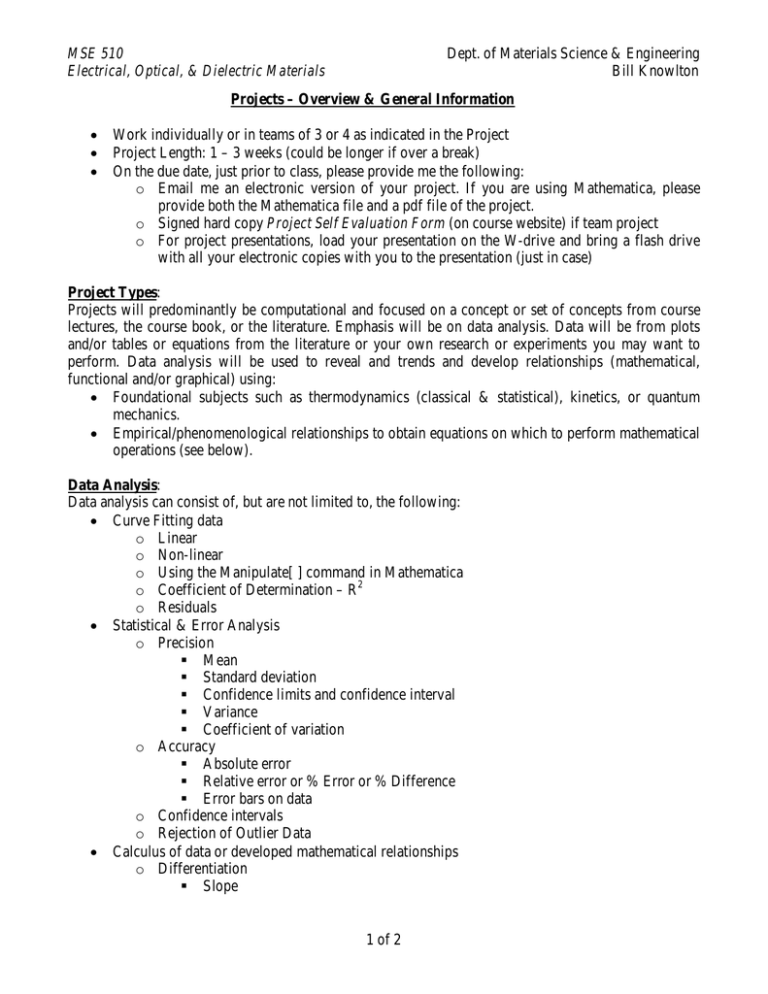
MSE 510 Electrical, Optical, & Dielectric Materials Dept. of Materials Science & Engineering Bill Knowlton Projects – Overview & General Information • • • Work individually or in teams of 3 or 4 as indicated in the Project Project Length: 1 – 3 weeks (could be longer if over a break) On the due date, just prior to class, please provide me the following: o Email me an electronic version of your project. If you are using Mathematica, please provide both the Mathematica file and a pdf file of the project. o Signed hard copy Project Self Evaluation Form (on course website) if team project o For project presentations, load your presentation on the W-drive and bring a flash drive with all your electronic copies with you to the presentation (just in case) Project Types: Projects will predominantly be computational and focused on a concept or set of concepts from course lectures, the course book, or the literature. Emphasis will be on data analysis. Data will be from plots and/or tables or equations from the literature or your own research or experiments you may want to perform. Data analysis will be used to reveal and trends and develop relationships (mathematical, functional and/or graphical) using: • Foundational subjects such as thermodynamics (classical & statistical), kinetics, or quantum mechanics. • Empirical/phenomenological relationships to obtain equations on which to perform mathematical operations (see below). Data Analysis: Data analysis can consist of, but are not limited to, the following: • Curve Fitting data o Linear o Non-linear o Using the Manipulate[ ] command in Mathematica o Coefficient of Determination – R2 o Residuals • Statistical & Error Analysis o Precision Mean Standard deviation Confidence limits and confidence interval Variance Coefficient of variation o Accuracy Absolute error Relative error or % Error or % Difference Error bars on data o Confidence intervals o Rejection of Outlier Data • Calculus of data or developed mathematical relationships o Differentiation Slope 1 of 2 MSE 510 Electrical, Optical, & Dielectric Materials • Dept. of Materials Science & Engineering Bill Knowlton Max-Min Inflection points Curvature and radius of curvature Develop Differentials o Integration Sum under curve (y*x relationships) Within cycle where paths differ and hysteresis effects exist Develop State functions Thermodynamics – work and energy relations o Solving differential equations Boundary conditions Change, rate of change, kinetics Kinetics Determine and analyze general solution/equation Other: the hope is that you will add to this list over the course of the semester! Grading: The projects will be graded on the following and thus should demonstrate to following: • Depth, Difficulty and Rigor – the extent and depth of the projects should go well beyond the examples shown in a regular textbook. The project should be thorough and complete. • Creativity – ideas generated and approaches used should show data analyses that incorporate models and laws that are worthy of scholarly work. Use of journal and conference publications is required. • Critical thinking – Data analyses should be thorough and thought provoking. • References - Use and citation of scholarly work required. • Applications – the question of the applicability of the project or analytical approaches used in the project to industry should be discussed. Address the impact of your work in non-academic fields. • Scope of work – Related, Relevant, & Pertinent to the subject matter covered in the chapter being covered. • See Grade Sheet 2 of 2
